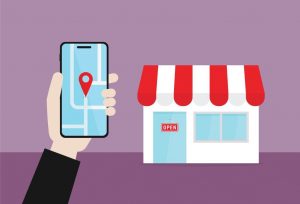How to Increase Brand Awareness
How many times have you requested a Band-Aid rather than a bandage?
Or, instead of a marker, a Sharpie?
When something is associated with a certain company’s name, that’s the best proof that a brand awareness effort worked.
Customers will remember you when they want to buy products like yours if they know about your brand. If you do a great enough job, your product and company will become the first choice for customers.
Do what the most successful companies do. Whether you’re starting a new business, changing the look of your company, or just trying to get people to notice your brand: Make brand-awareness efforts that stand out.
This guide will teach you how to make more people aware of your brand, make your marketing efforts more effective, and ultimately help you generate more money.
To use best practices for brand recognition, you need to know why it’s important to improve how you’re positioned to your target audience.
Brand awareness is essential for your eCommerce success.
Brand Awareness equals Sales and Attention to Your Brand
Successful companies, like Apple, Nike, and Warby Parker, carve out individual brand identities, forming distinct perceptions in the minds of their consumers. This results in increased sales, stronger connections, and, in some circumstances, die-hard customer loyalty.
Then how do you build or increase your brand awareness like the top brands?
We’ll discuss how successful businesses create their identities in this post, along with tips on how you can do the same.
What separates marketing from brand awareness?
Brand awareness and marketing are extremely distinct even if the two are frequently misconstrued.
Let’s examine two essential distinctions between brand awareness and marketing:
One component of a marketing strategy is brand awareness
Brand recognition is a component of the whole marketing plan. Branding is a significant piece of the marketing pie, which is the whole thing.
Comparison between direct and indirect marketing
Indirect marketing includes the process of increasing brand awareness. The objective of indirect marketing is to educate your target market about your brand rather than trying to sell them your products. In contrast, marketing is a type of direct marketing with a sales focus.
Strategies to Increase Brand Awareness Campaigns
Following are five ideas for increasing brand awareness:
1. Content Marketing
Unique storytelling and content marketing that is packed with value will stand out. How to format your content is shown below.
Become Emotional
Successful brands engage with their customers on an emotional level. According to the Harvard Business Review (HBR), “on a lifetime value basis, emotionally connected customers are more than twice as valuable as highly satisfied customers.”
Share a Story
According to Entrepreneur Magazine, the most successful storytellers achieve the greatest brand awareness. Learn how to tell and sell a great brand story for optimum impact.
Become an Expert
Customers have trust in popular brands. Through your content marketing program, you may establish trust and authority. Engage your audience in honest, open, and transparent debates about your brand and content.
Make an Impression
To capture attention and form deeper connections with your target audience, put storytelling and trust-building at the heart of your strategy. Storytelling communicates shared values, fosters emotional connections, and encourages participation.
Maintain Consistency
“Content consistency” is important, according to Forbes, and it helps generate “a better customer experience, but it also helps build credibility, reputation, and brand trust.”
Be daring, One-of-a-kind and Distinctive
Celebrate what makes your brand unique, unusual, edgy, or daring. Your secret sauce could be your differentiator.
2. Use Social Media Platforms to build Brand Awareness
You don’t have to be on every social networking platform. You simply need to be present on platforms that are relevant to your target demographic. That way, you can devote your time, money, and resources to the platforms that have the greatest resonance with that demographic and offer the highest ROI.
Concentrate your efforts on what is important to your target audience:
Favourite social networking sites
For example, studies suggest that stay-at-home parents with a lot of purchasing power prefer Pinterest, Instagram, and TikTok.
What do they spend their money on and why
Is Etsy promoting handcrafted items? Are they buying in bulk to save money? Do they intend to save time by utilising subscription services?
What information do they want about your products and company?
Are they looking for green products and specialised information from environmentally friendly brands?
Knowing which social media sites your target audience prefers and what they are looking for will help you provide what they need while also accomplishing your brand awareness goals.
3. Paid Media
Pay-per-click (PPC) or social media boosting campaigns can quickly increase your visibility without being intrusive to customers.
Starting small with Google Search and Display Ads to appear higher on Google or YouTube. Alternatively, you can plan a more comprehensive campaign that includes optimised targeted social media ads, paid influencers, banner ads, and more.
If you need help getting started with a sponsored marketing campaign, contact us and one of our Growth Services professionals will gladly answer any questions you have.
4. SEO (Search Engine Optimization)
There’s no denying that SEO is more competitive than ever. While PPC is one answer, you should still focus on bringing in as much organic traffic as possible – make your business easy to find.
5. Event Sponsorships
By sponsoring an event, you can get your business in front of your target audience – or even in their pockets with branded take-home products. People love freebies!
Event sponsorships also allow you to target certain industries, niche demographics, or large audiences that you might not otherwise be able to reach.
Measure Brand Awareness
Because brand awareness is unique to your business, there is no hard and fast rule for measuring it. Instead, measure what matters to your brand.
Keep the following in mind as you build a measurement strategy:
#1. Define brand awareness for your Business.
Because brand awareness might mean different things to different stakeholders within the same firm, develop a clear description and matching goals.
#2. Create brand awareness objectives with definite deadlines.
For example, “Increase our Instagram engagement by 8% by December 31.”
#3. Define KPIs based on how you define brand awareness and the goals of your business.
Here are some metrics to think about:
Direct traffic: Particularly new traffic since the campaign’s start.
Branded Search Volume: The combination of a brand and keywords.
Social Media Engagements: Likes, comments, shares, video views, and so forth.
Brand Mentions: Websites or blogs, and so on.
#4. Evaluate and report on brand awareness performance on a regular basis.
To reach your objectives, you must track, analyse, and report on your brand awareness KPIs on a regular basis, and make adjustments as needed. An analytics strategy can help you keep your reporting as simple as possible.




